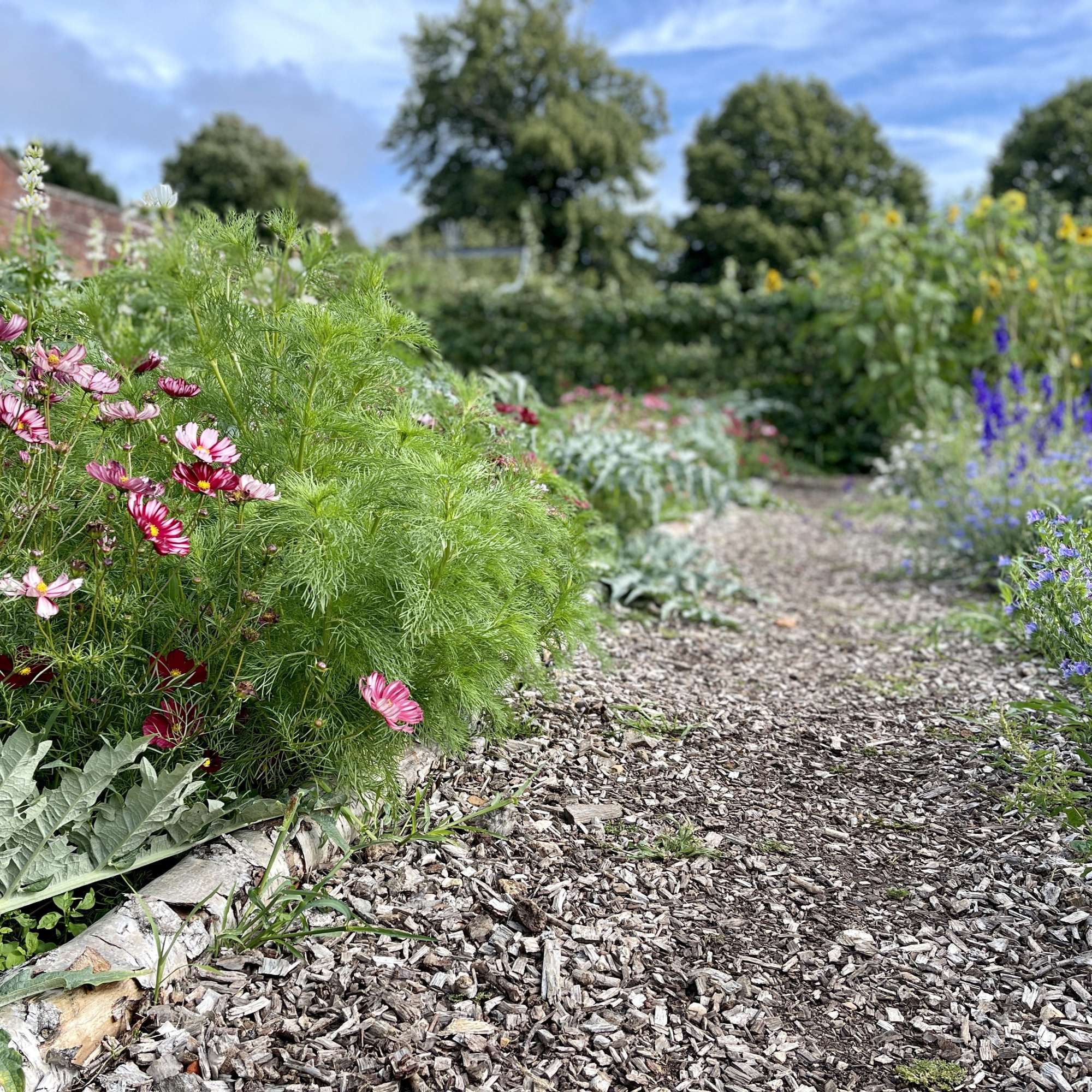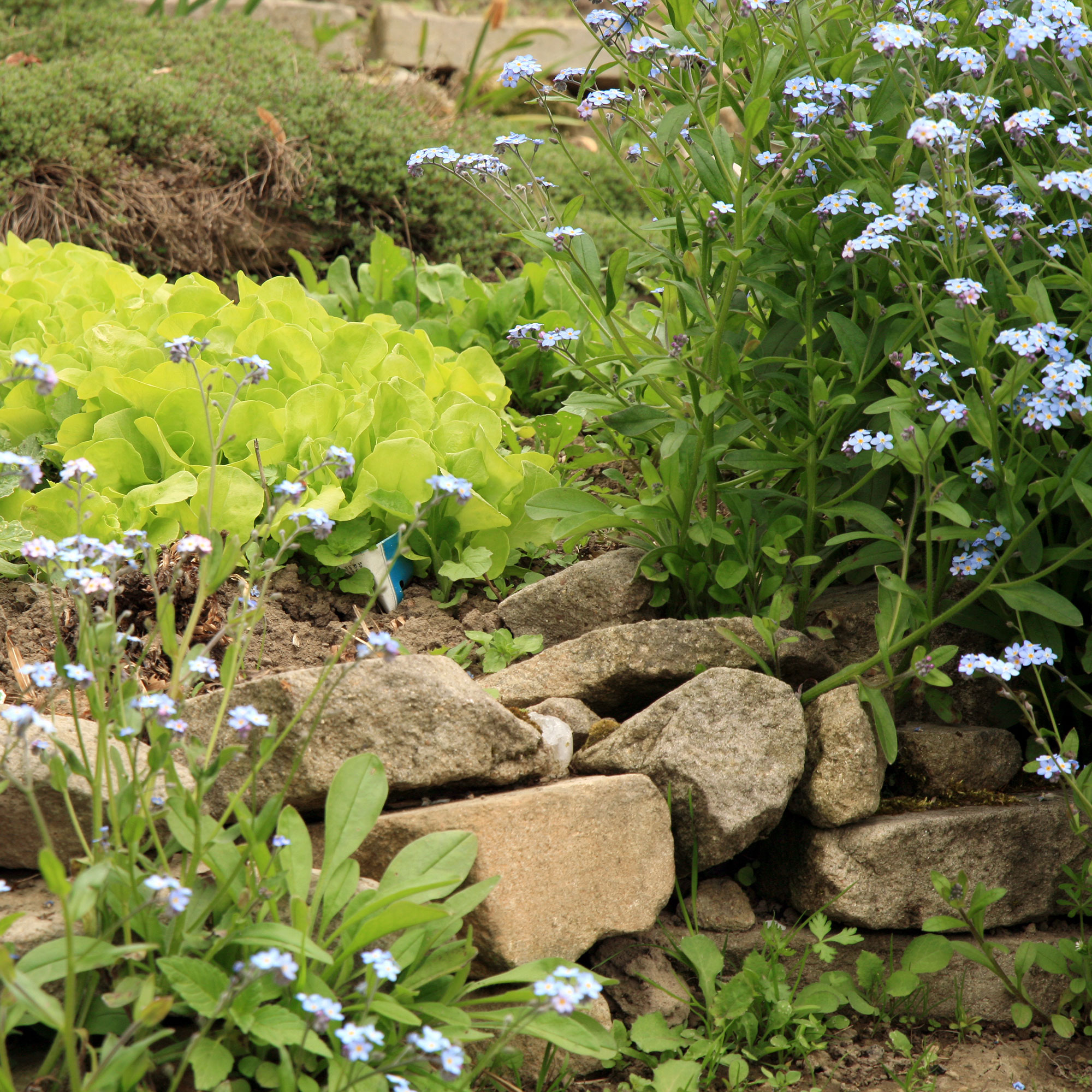
Ground cover plants are unsung heroes of the garden. They form an attractive carpet, opening the floor to various garden border ideas, while protecting the soil from erosion.
It's easy for them to grow beyond their allotted space, though, which is why it's important to know how to trim ground cover plants.
These plants add year-round interest to the garden while providing a host of benefits. For example, ground cover plants can suppress weeds and even retain soil moisture by acting as a makeshift mulch. They're a real helper and time-saver in the garden.
We've asked the experts for their best tricks for cutting back ground cover plants to help you keep your space in check.
How to trim ground cover plants
Ground cover plants are often overlooked when deciding what to prune in June. Left alone, they can grow well beyond the space you initially planned for them.
Ground cover plants come in various types, including flowering and non-flowering varieties. They're often evergreen, like ivy, meaning they'll stick around all year. Plus, there are lots of ways you can use ivy in the garden, among other evergreen plants.
Exactly how to trim ground cover plants will depend on each variety, but we're covering the simple tricks you can apply to most types.

What you'll need
1. Setting up
- A pair of high-quality bypass secateurs ARS Professional Bypass Secateurs from Amazon
- Gardening gloves
- Rake
- Bag to collect clippings
Ensuring you have the right equipment for trimming plants in the garden will save both time and pitfalls later on.
‘Make sure you have the right tools, including pruning shears or scissors, gloves, and a rake,' says Morris.
'Ensure the tools are clean and sharp to make precise cuts and avoid damaging the plants.’
Knowing how to clean your tools between trimming sessions will ensure that diseases aren't spread between plants.
You can even use larger equipment like a heavy-duty lawn mower with the right settings – but more on that later.

2. Remove diseased growth
Check the plants over for any damaged growth. Ground cover plants grow close together, meaning diseases can easily spread between plants.
Diseases to look out for include blight and fungal leaf spots, which thrive in conditions that lack air circulation. Ivy is particularly susceptible to fungal leaf spots, and rust is one of several common rose problems and diseases.
It’s important to remove diseased growth to prevent infections from spreading to other areas of the ground cover.

3. Get trimming
Next, focus on reducing the size of the ground cover.
‘Cut back any overgrown or leggy stems to promote a more compact and bushy growth habit,’ advises Morris. ‘Trim back about one-third of the plant’s height. This will stimulate new growth from the base and prevent the plant from becoming too woody.’
Petar Ivanov, garden expert at Fantastic Gardeners, recommends several different tools for trimming ground cover plants: ‘I’d recommend using a string line trimmer and cutting the leaves back to 5 to 8 centimetres above ground level.’
‘Alternatively, you can use a heavy-duty lawn mower if you have one, which you can even get inside the garden bed or border with. With this trimming method, you’ll first need to make sure your mower’s blades are well-sharpened and set them between 5 to 8 centimetres in height.’
‘Mow over the top of your round cover plant and, if you can, go over the area twice in opposite directions for cleaner and more even results.’
4. Tidy up old growth
As you trim your ground cover plants, make sure you cut away any dead or old growth to allow light and air to reach the new shoot.
'This helps prevent mould and encourages healthier plants,' advises Morris.
For ground cover plants in a small area, Petar advises using hand or shrub shears to prevent damage to surrounding plants. ‘Even though it’ll take you longer to perform the task with these tools, you’ll be more accurate and will prevent damage to any other specimens.’

5. Aftercare
Your ground cover plants will need some TLC after they've been trimmed.
'After trimming, water the plants well to help them recover from the stress of pruning,' Morris suggests.
'Then, add a layer of mulch around the plants to retain moisture and suppress weeds.'
What to avoid
While it’s tempting to dive straight into the task of trimming your ground cover plants, there are a few reasons to hold back until the conditions are right.
‘Avoid trimming during extremely hot or dry periods to prevent stress on the plants,’ says Morris.
‘Spring and early summer are usually the best time to trim ground cover plants, as that is when they are actively growing.’
What to trim
Achilleas respond well to cutting down after flowering, encouraging fresh growth and sometimes a late flush of flowers.
Cut back the spent flower stems and foliage to retain a bushy shape and encourage growth. Divide congested clumps in late autumn or early spring.
Hypericum is a shrub that can be reduced in size by cutting back in the spring or early Summer. Remove any weak or thin growth and trim back the rest to a strong shoot. This will help to keep the shrub compact.
FAQs
Do you have to trim ground cover plants?
Most experts agree that it is necessary to trim ground cover plants to keep them in check as they grow. However, there are ways you can lengthen the time between trims.
'If there’s no physical barrier around your ground cover, then it's likely that it will advance outwards beyond the original planting area,' says John Clifford, director of Gardenstone. 'To keep your ground cover under control, you'll have to trim it regularly to prevent the spread of underground stems.
'However, you can avoid trimming by installing edging around your ground cover. I recommend edging in the form of a wooden, metal, brick or plastic barrier that is placed in the ground surrounding the planting area, as this will prevent them from growing out of control.
'With effective edging in place you will only be required to trim the unhealthy or dead parts of the ground cover'.
How do you look after ground cover plants?
In addition to some basic trimming and pruning, ground cover plants will need to also be fertilised afterwards when the weather starts to warm up, typically in March.,' says Petar Ivanov.
'Do that by using a three-month or longer slow-release fertiliser. Besides purchasing it, you can also make natural fertiliser yourself from organic matter, coated urea or polymer-coated formulas.'
Keep your garden looking tidy and start trimming this weekend.






